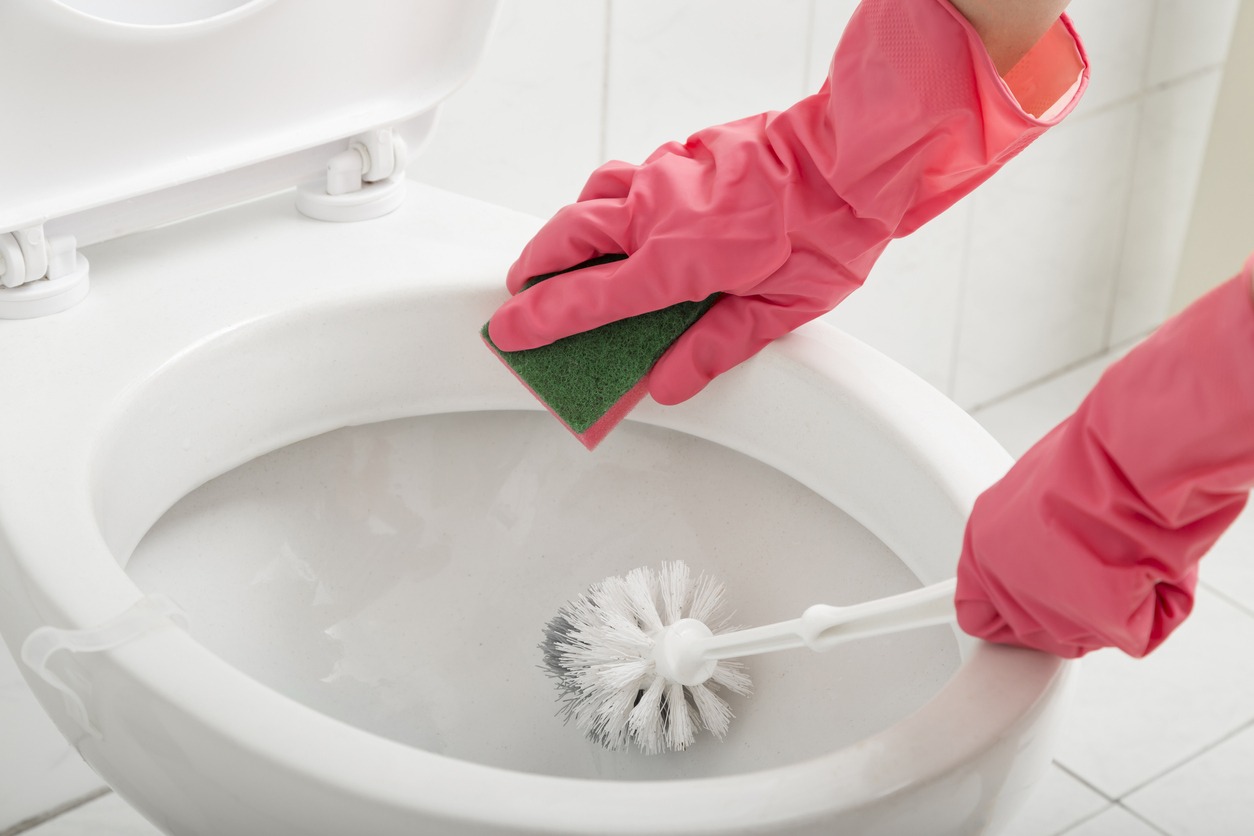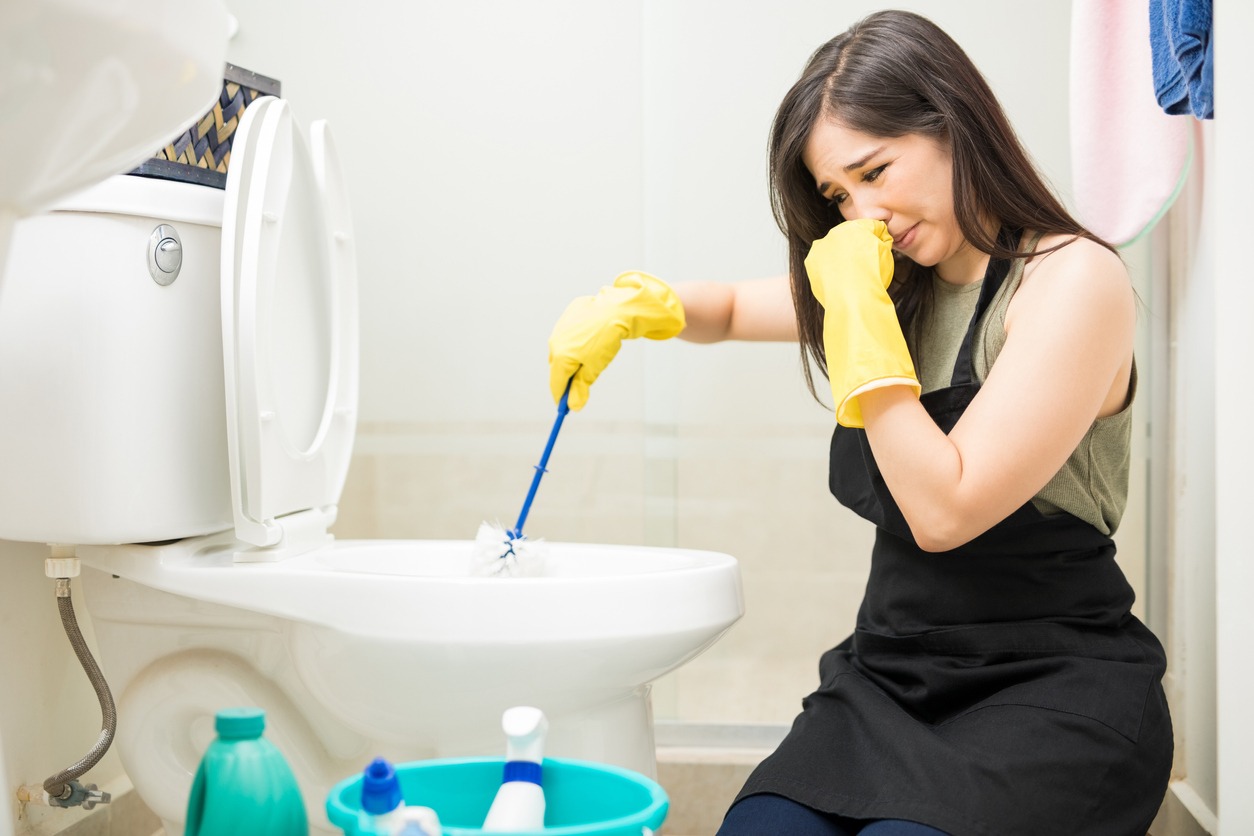Everybody has their least favorite chores, which they will often do anything to avoid. How frequently have you entered a bathroom and wondered when it was last cleaned? The mirror’s watermarks make fun of you. You can hear soap scum yelling at you from behind the fabric shower curtain. The smell emanating from the toilet and toilet tank is the worst, and it will make you want to scream and run away, never to come back.
When it comes to toiletries, you probably want to find items that focus on eradicating germs while also offering general maintenance to keep things running smoothly. But there are times when less is more. Too much cleaning can cause septic issues, which adds to the mayhem in the can.
How Often Should a Toilet be Cleaned?
You still need to clean the toilet even though it stinks and isn’t at the top of your list of priorities. As part of daily maintenance, the inside of the bowl should be cleaned with a toilet brush to remove debris, and the outside should be cleaned with cleaner and a cloth if there are any obvious signs of dirt. Weekly deep cleaning is recommended. Here, the restroom has been meticulously cleaned from top to bottom and inside to out. The bowl, rims, lids, hardware, and everything else need to be spotless and germ-free.
It’s not so bad once you get the hang of cleaning the toilet. Sure, a lot of people turn up their noses at the idea, but with some practice and knowledge of a few toilet-cleaning hacks, it will be finished in no time.
Below are some tricks and life hacks to make cleaning toilet easier and more effective:
1. Vinegar, And Baking Soda Bombs
Because they work so well, vinegar and baking soda are the main ingredients in many DIY cleaners. Although vinegar is the safest option and also does the job, bleach is frequently used as a germ-killing cleaner. Your cleaners must be as safe as possible if you have children. Because most homes already have them in the pantry, baking soda and vinegar make a potent duo and are also very handy. Make your own toilet-bowl bombs to make your toilet sparkle by using baking soda, dish soap, molds, and Epsom salt.
2. Sanitize With Peroxide
Although hydrogen peroxide is safer, bleach can still be used to kill germs if you’re worried about safety. Use 3% hydrogen peroxide and leave the area unattended for 10 minutes to disinfect. Despite being eco-friendly, use white rags or cloth when cleaning because other colors can bleach the fibers.
3. Use Cola
Strangely enough, some people cling to it. Grab a can of Coca-Cola, pour it into the toilet bowl, and let it sit there for a few hours if you notice a ring forming around it. After about an hour, scrub away with a toilet bowl brush to remove any remaining stains and residue that the carbonation hasn’t already broken down.
4. Maintain Cleanliness
Maintaining your toilet is just as important as keeping it spotless and germ-free. Check for any leaks or clogged drains as you clean. Never flush anything down the drain besides toilet paper and human waste as this causes bigger, more expensive issues. Always call a professional to unclog a drain if you can’t do it yourself.
5. Use baby oil
Banishing germs shouldn’t be your only concern when it comes to a clean toilet. You want your bathroom to look inviting and spot-free – an elegant place to do your business! Buffing your toilet – including the fixtures – with baby oil will make it shine all over. Be sure to use a soft cloth and nothing abrasive to avoid scratching and damaging the surface.
6. Pumice Stone for Stains
A pumice stone is useful for more than just your feet. To “scrub” away tough stains, use a pumice stone, but be careful. Always begin with a warm, soaked stone to prevent scratching your toilet. Start by wetting the stone, then gently rub the pumice on the stained area in a circular motion until it is removed and rinse off the area with water After the stain has been eliminated, dry the area with a cloth to prevent further deterioration of your toilet.
7. Unclog Pipes with Hot Water
Unclogging a clogged toilet can be just as difficult as having one in the first place. Serious clogs can cost you dearly, leaving you to wonder what the issue is. Pour dish soap and hot water down the toilet to remove the clog. Be careful not to let the water get too hot or you risk damaging the bowl or pipes.
8. Don’t Forget What’s Below
Although the area beneath the toilet seat is probably not appealing, it shouldn’t be ignored! Remove the lid of the toilet seat if it is removable and scrub any grimy areas you notice. Equally filthy and likely overlooked is the underside of the toilet bowl rim. What goes on down there is hidden from view! Applying vinegar and borax together and letting it sit for a few hours can help remove excess mildew while also killing any hidden mold.
9. Pour some brewed tea
Everyone’s go-to remedy in trying circumstances is a cup of tea, which is another odd trick for removing tough stains. The tannins in tea have both antimicrobial and stain-lifting properties. Before brushing the bowl and flushing the stains away, pour some brewed tea into the toilet bowl and let it sit there for a few minutes or, for particularly stubborn stains, several hours.
10. Use white vinegar to remove stains
To remove toilet stains and germs, most people turn to bleach. Put toilet paper that has been soaked in vinegar directly on stains caused by hard water to remove them. The paper should sit in vinegar for the entire night. When you flush to rinse in the morning, the stains should be gone. Grout and caulk respond well to full-strength vinegar as well. Spray the area thoroughly with a spray bottle, then wait at least an hour before rinsing.
You’ve completed this list of hacks, so kudos to you. If you compare where you were at the beginning of this article to where you are now, you’re like 10 hacks smarter. Such a large number of hacks. You will no longer have a valid reason to put off cleaning the bathroom until tomorrow the next time you run out of cleaning supplies. You undoubtedly have some common household remedies on hand, whether they are vinegar and baking soda, cola and baby oil, or lemons and black tea.


